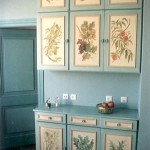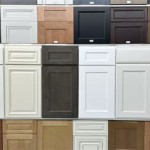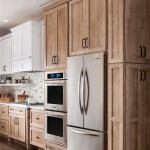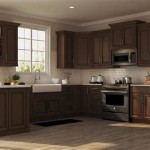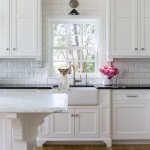What is a Blind Corner Cabinet?
A blind corner cabinet is a type of kitchen cabinet designed to maximize storage space in areas where two cabinet runs meet at a right angle, creating a corner. These corners often present a challenge in kitchen design because they can be difficult to access and can become wasted space. Instead of simply filling the corner in with a fixed, inaccessible unit, blind corner cabinets employ various mechanisms and designs to make the typically unusable space functional and accessible.
The term "blind" refers to the fact that a portion of the cabinet's interior is hidden or obscured due to its location in the corner. This blind area can be quite deep, rendering traditional shelving methods impractical for accessing items stored at the back. As a result, specialized hardware and configurations are necessary to retrieve contents effectively. Blind corner cabinets aim to overcome this obstacle by providing solutions that bring items stored deep within the corner to the user.
Blind corner cabinets are typically base cabinets, meaning they sit on the floor and support the countertop. They are available in various sizes and configurations, allowing designers to customize the layout of a kitchen to fit specific needs and aesthetic preferences. The dimensions of a blind corner cabinet will depend on the overall kitchen design, including the length of the adjacent cabinet runs and the desired amount of storage.
The primary purpose of a blind corner cabinet is to utilize an otherwise dead space in the kitchen. Standard cabinets placed in a corner would leave a significant portion of the corner area inaccessible, thereby reducing the overall storage capacity of the kitchen. Blind corner cabinets offer a solution to this problem by incorporating mechanisms that extend into the blind space, bringing items stored there within easy reach. This effectively increases the usable storage volume and improves the organization of the kitchen space.
Various types of hardware and designs are available for blind corner cabinets, each with its own advantages and disadvantages. The selection of a specific type will depend on factors such as budget, storage needs, and aesthetic preferences. These mechanisms range from simple pull-out shelves to more complex, multi-tiered systems that maximize the utilization of the corner space.
Understanding the Functionality of Different Blind Corner Cabinet Mechanisms
Several types of mechanisms are used to make the contents of a blind corner cabinet accessible. These mechanisms generally involve some form of pull-out or swing-out shelving system. The goal of each design is to bring items stored in the back of the cabinet to the front, where they can be easily retrieved.
One common type is the "blind corner pull-out shelf." This system consists of one or more shelves that slide out of the cabinet, bringing the contents forward. Some designs feature a simple shelf that pulls straight out, while others incorporate a pivoting mechanism that allows the shelf to swing out to the side for easier access. The pivoting designs allow for a wider range of motion and make it easier to reach items stored in the corners of the shelf.
Another popular option is the "blind corner organizer with swing-out shelves." These systems typically feature multiple shelves that are connected by a series of hinges. When closed, the shelves nest inside the cabinet. When opened, they swing out in a cascading fashion, bringing all the items stored on the shelves into view. These systems often offer greater storage capacity and improved organization compared to simple pull-out shelves.
A more involved system is the "magic corner" organizer. This type of system typically features two sets of shelves, one connected to the cabinet door and the other attached to a frame that pulls out of the cabinet. When the door is opened, the front set of shelves pivots out of the way, allowing the frame with the rear set of shelves to be pulled out completely. This system provides full access to all items stored in the corner, but it can be more expensive than other options.
Regardless of the specific mechanism used, the primary goal is to overcome the challenge of accessing items stored in the blind corner. These systems increase the functionality of the cabinet and make it easier to keep the kitchen organized.
Choosing the Right Blind Corner Cabinet for Your Kitchen
Selecting the appropriate blind corner cabinet mechanism requires careful consideration of several factors. These factors include the size of the corner, the type of items to be stored, the budget, and the overall design aesthetic of the kitchen.
Consider the size of the blind corner. Measure the dimensions of the corner carefully to ensure that the chosen mechanism will fit properly. Different mechanisms require different amounts of clearance, so it's important to select a system that will work within the available space. Also, consider the size of the cabinet doors and how they will interact with the chosen mechanism. A poorly sized door could obstruct the function of the pull-out or swing-out elements.
Think about the types of items that will be stored in the blind corner cabinet. For example, if you plan to store heavy pots and pans, you will need a system that is strong and durable enough to support the weight. If you plan to store smaller items, such as spice jars or canned goods, you may want a system with multiple shelves or tiers to maximize storage capacity and organization. Consider the accessibility requirements for the items you plan to store. Frequently used items should be stored in locations that are easy to reach, while less frequently used items can be stored in the back of the cabinet.
Establish a budget for the blind corner cabinet and the associated hardware. The cost of blind corner cabinet mechanisms can vary significantly, from relatively inexpensive pull-out shelves to more expensive and complex systems like the magic corner. A higher price point often correlates with greater durability, convenience, and storage capacity, but not always. Assess the features and benefits of each option and determine which one offers the best value.
Finally, consider the overall design aesthetic of the kitchen. The blind corner cabinet should complement the rest of the cabinetry and blend seamlessly with the overall design. Choose a system that matches the style and finish of the other cabinets in the kitchen. Consider whether the mechanism will be visible when the cabinet is open and whether this is a concern. Some systems are more discreet than others. Hardware finishes should also complement the overall kitchen design.
Installation and Maintenance of Blind Corner Cabinets
Proper installation is essential for ensuring the functionality and longevity of a blind corner cabinet. While some homeowners may choose to install the cabinet themselves, professional installation is generally recommended, particularly for more complex mechanisms. A professional installer will have the experience and tools necessary to ensure that the cabinet is properly aligned and that the mechanism functions smoothly.
Before installation, carefully inspect the cabinet and hardware for any damage. Ensure that all the necessary components are included and that the instructions are clear and easy to follow. Thoroughly prepare the installation area, ensuring that the floor is level and that there are no obstructions. Accurately measure and mark the locations for the mounting hardware to ensure proper alignment.
During installation, pay close attention to the manufacturer's instructions. Use appropriate tools and techniques to avoid damaging the cabinet or the hardware. Ensure that all screws and bolts are tightened securely, but not over-tightened, which can damage the wood or strip the threads. Test the mechanism thoroughly after installation to ensure that it functions smoothly and properly. Check for any binding or rubbing, and adjust the hardware as needed to eliminate these issues.
Regular maintenance is necessary to keep the blind corner cabinet functioning properly. Clean the cabinet interior and the hardware regularly to remove dust and debris. Use a mild detergent and a soft cloth to avoid scratching the finish. Lubricate the moving parts of the mechanism periodically to ensure smooth operation. Use a silicone-based lubricant or a dry lubricant to avoid attracting dust and dirt.
Inspect the cabinet and hardware regularly for any signs of wear or damage. Tighten any loose screws or bolts, and replace any damaged components promptly. If you notice any problems with the mechanism, such as sticking or binding, consult the manufacturer's instructions or contact a professional installer for assistance. Addressing minor issues promptly can prevent them from escalating into more serious problems.
By following these installation and maintenance guidelines, you can ensure that your blind corner cabinet provides years of reliable service and maximizes the storage potential of your kitchen.

Blind Corner Cabinets Step By Guide On How To Install

What Is A Blind Corner Cabinet The Homestud

Blind Corner Accessories Info

How To Make Blind Corner Cabinet Space More Useful

What Is A Blind Corner Cabinet The Homestud

Double Shaker White 39 Base Blind Corner Cabinet Cabinetselect Com

Ultimate Guide To Blind Corner Cabinets

How To Make Blind Corner Cabinet Space More Useful

Shaker White 42 Blind Base Corner Cabinet

Base Blind Corner Cabinet With Full Access Trays Schuler Cabinetry At
Related Posts

